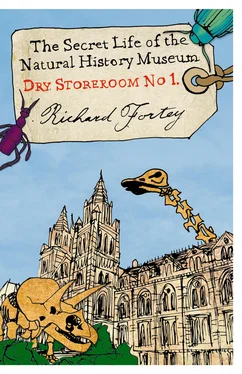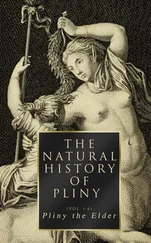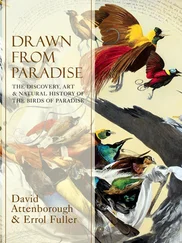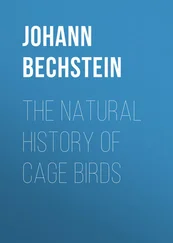The collections in this particular part of the Museum and in this particular aisle are devoted to vertebrates from the geologically recent period known as the Pleistocene, a time slice that includes the last ice ages. Inside the tray on which each fossil rests there is a neatly written label which tells us that this particular collection was derived from the cliffs at Easton Bavents, near Southwold in the county of Suffolk, a place where the sea is eroding some of the youngest rocks in Britain, though they are still over a million years old. Sharp-eyed local collectors had spotted these organic remains as winter storms excavated them from the soft sandy cliffs. Had they not been collected and housed in a museum, a few seasons of weathering on those harsh shores would have reduced the bones to meaningless rubble. So the Museum provides a way of cheating decay, of sequestering information from the degradations of time. Doubtless, each specimen provoked a thrill of recognition in its discoverer, the satisfaction of a search rewarded. This single drawer preserves the record of days of endeavour and an archive of pleasure in discovery, or secret gloating over finding the best specimens of the season. Each bone could tell a story of the relative roles of luck and perseverance in science. Fossil fragments have an eloquence that belies their yellowish uniformity. Perhaps the observer will feel a twinge of disappointment at the incompleteness of the specimens, having seen reconstructions in books and films of whole animals striding about the landscape. These remains are just scraps, bits and pieces, odds and ends. The truth is that much fossil material is like this. The skill of the scientist often lies in being able to identify small pieces of a whole animal: from tooth to elephant. Every morsel of the past is useful.
The writing on the labels does not betray any drama of discovery. Old labels like these are written in the hand of the curator at the time the specimen is identified. They are small slips, about the size of one of those special postage stamps issued by countries like San Marino. The writing has to be very neat. Old labels are frequently found written in the copperplate script preferred by the Victorians. Newer ones favour small, neat script. Everything is written in Indian ink so that time will not allow the messages to fade. After all, the 1753 Act of Parliament that set up the British Museum specified that the collections ‘shall remain and be preserved in the Museum for public use for all posterity’. These labels were meant to last. An old label is a message from a curator whom one might never have met, but a little personal message on paper nonetheless. There was a time when the hiring of curators was accompanied by a writing test; nobody with overly large writing would be employed, nor any scribblers, nor any who employed extravagant curlicues. Graphologists would have had a very dull time with those who came through the interviews. More recently, the computer has replaced the skilled human being, as so often, so that neat little labels can be spewed out of a laser printer at the touch of a button. In future, labels will always be impersonal (and if there is a mistake, probably nobody will know who made it). At the top of the label accompanying the large tooth is the Latin, or scientific, name of the animal concerned: Mammuthus primigenius – an ancient mammoth. Any visiting scientist will recognize that name. The rock formation from which it was recovered (Easton Bavents Formation) is given next. The age of the specimen within the Pleistocene period follows. Beneath this again is the locality, specified quite precisely. Nowadays a locality might well be given by a GPS position, but British specimens could be fairly precisely located by reference to the national grid, and I have seldom had a problem relocating a locality if this information was given. Then there is the name of the collector of the specimen, who also happened to donate it to the Museum ‘for all posterity’. Many labels will include more information, especially if the specimen to hand has been mentioned or figured in a scientific paper. This is how the importance of the material is conveyed to the outside world: not everybody can come to root around in the drawers of the Museum to see the specimens themselves. Specimens are made known to experts around the world primarily through catalogues and technical publications. So the label might also bear something like: ‘Figured by Ann T. Quarian in Transactions of the Society for Ancient Things Volume 1, Plate 1 figure 2’.
That is just one specimen taken at random from a single drawer in a rank of drawers in just one cupboard from one row of cabinets. Some drawers may contain a hundred specimens or more – the next one down includes tiny vole teeth, for example. There may be a dozen or more drawers in a single rank; and there are some ten ranks of drawers in a row. On this floor there are fifty-seven rows or lines of cabinets; except where very large specimens are accommodated, almost every drawer carries a full burden of specimens. In this department alone there are three floors of fossil collections of comparable or greater size. That adds up to a very large complement of drawers, and a vast number of specimens. It does not require a calculation to show that only a tiny fraction of the material held by the Museum is on display to the public: the galleries show the merest sample from a colossal collection. In the secret world behind the scenes there is no shortage of specimens; indeed, one of the main problems is how to accommodate the sheer bulk of new material. Much of it is fragmentary, like the Easton Bavents bones. Its value is scientific and it would not fetch much on the open market. A few specimens are precious and valuable in their own right. ‘Million dollar fossils’ might include the famous original of the Jurassic bird Archaeopteryx or the exquisitely preserved fossils of Cretaceous fishes from Brazil. But that is not why we have museums with collections of natural history specimens. A few scraps of bone can tell us what the climate was like three hundred thousand years ago: that is a value that cannot be reckoned in euros or dollars.
Countless specimens: rows of cabinets and drawers for storing the insect collection. In 2007 this storage was being replaced and renewed.
Museum cabinets. Photo © Natural History Museum, London .
My first office was not in the present palaeontology wing, which was officially opened in 1977 – by which time I was already an old hand. I originally had an office in the old building, tucked away in the basement beside the main entrance. On busy days I could hear the chattering of children as they swarmed up the steps. It was a hugely tall room, and not like an office at all, lit from a large window that looked out on to the lawn in front of the Museum. The collections – my part of the collections – were stored within the room in old storage cabinets. The office was so tall that it had an extra gallery halfway up, reached by a steel staircase. If I wanted to examine some part of the collections I would have to clunk up the stairs, carrying my hand lens, like an antiquarian gaoler, and open drawers in this upper storey. There were railings all around it to ensure that I did not fall off. The cabinets were beautifully crafted. Each drawer had an independently suspended glass top to keep out the dust. The mortise and tenon joints that formed the corners of the drawers would have struck dumb any carpenter. Labels on the front of each drawer recorded the scientific names of the fossils within. They were cupboards made for eternity. From my first day in that office I felt like an expert – the man from the BM.
I should explain that the Natural History Museum was then known in the scientific trade as the BM, the British Museum. The official title of the museum at the time of my employment was in fact the British Museum (Natural History). The South Kensington museum had split off from the original BM at Bloomsbury when the natural history collections had become so large as to require separate accommodation. The divorce from the mother institution was slow and legalistic. Formal separation from Bloomsbury did not happen until an Act of Parliament of 16 August 1965. The old BM title nonetheless had a magisterial presence that could not be instantly erased. My colleagues would call me up to make a date to ‘come to the BM’ as if that were the only way in which it could be referred to. At conferences, I would still describe myself as belonging to the British Museum – after all, there were other natural history museums all over the place but only one BM, which housed collections made by Sir Joseph Banks and Charles Darwin. However, since the public at large referred to it as the Natural History Museum, in 1990 that finally became its official title. Farewell to the BM, with the finality of the end of the gold sovereign or the landau carriage. Even so, some of my more senior colleagues still sneakily find themselves talking about ‘finding time to call in at the BM …’.
Читать дальше












